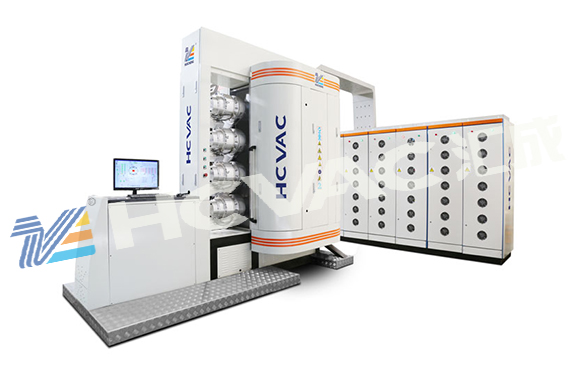Many people on pvd coating machine vacuum plating and sputtering and coating, always simulate ambiguous, can not distinguish clearly, vacuum plating and coating, the difference is still very big, the following for you to introduce, hope to help you:
The pvd coating machine uses PVD-physical vapor deposition, which refers to the process of using a physical process to achieve material transfer and transfer atoms or molecules from the source to the surface of the substrate. Its role is to enable some particles with special properties (high strength, wear resistance, heat dissipation, corrosion resistance, etc.) to be sprayed on the substrate with lower performance, so that the substrate has better performance.
pvd coating machine vacuum coating basic methods: vacuum evaporation, sputtering, ion plating (hollow cathode ion plating, hot cathode ion plating, arc ion plating, reactive ion plating, RF ion plating, DC discharge ion plating)

Vacuum evaporation, sputtering, ion plating
Vacuum plating mainly includes vacuum evaporation plating, sputtering plating and ion plating several types, they are used in vacuum conditions, through distillation or sputtering and other ways to deposit a variety of metal and non-metal films on the surface of plastic parts, through this way can get a very thin surface coating, while having the outstanding advantages of fast adhesion, but the price is also high. There are fewer metal types that can be operated, and they are generally used as functional coatings for higher-grade products.
Vacuum evaporation method is to heat the metal under high vacuum, melt and evaporate it, and form a metal film on the surface of the sample after cooling. The coating thickness is 0.8-1.2um. The small concave and convex part of the surface of the formed product is filled to obtain a mirror-like surface, whether it is for the purpose of vacuum evaporation, or for the vacuum evaporation of less dense steel, it is necessary to apply the underside coating treatment.
Sputtering usually refers to magnetic control sputtering, which is a high-speed and low-temperature sputtering method. The process requires a vacuum degree of about 1×10-3Torr, that is, 1.3×10-3Pa vacuum state filled with the inert gas argon (Ar), and added high voltage direct current between the plastic substrate (anode) and the metal target (cathode), due to glow discharge (glow discharge) generated by the electron excitation of the inert gas, A plasma is generated, which blasts atoms from the metal target and deposits them onto the plastic substrate. General metal coatings mostly use DC sputtering, while non-conductive ceramic magnetic materials use RF AC sputtering.
Ion plating is a method of partially ionizing the gas or evaporated substance by gas discharge under vacuum conditions, and depositing the evaporated substance or its reactants on the substrate under the bombardment of the gas ion or evaporated substance ion. It includes magnetron sputtering ion plating, reactive ion plating, hollow cathode discharge ion plating (hollow cathode evaporation method), multi-arc ion plating (cathode arc ion plating) and so on.



